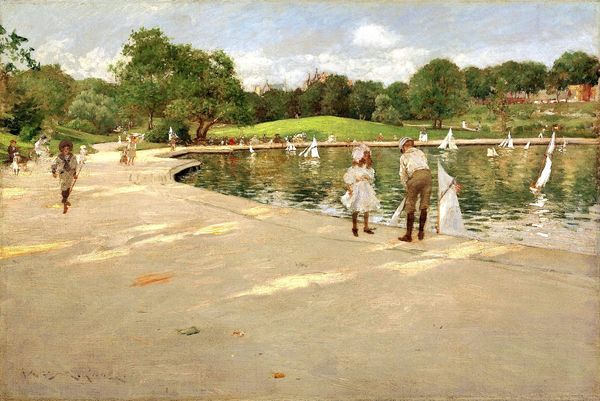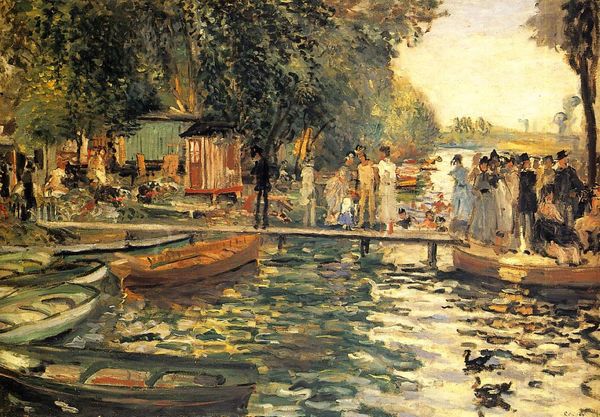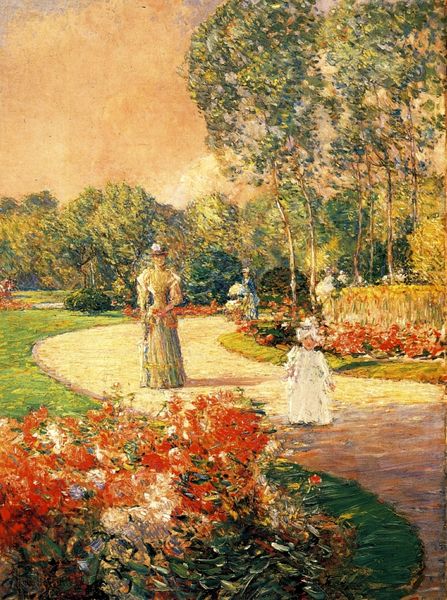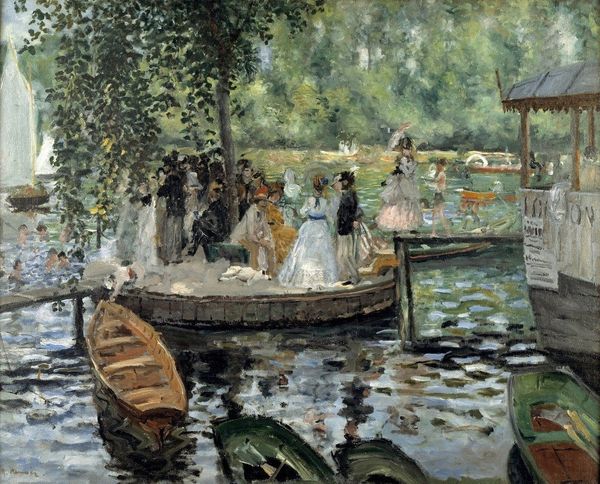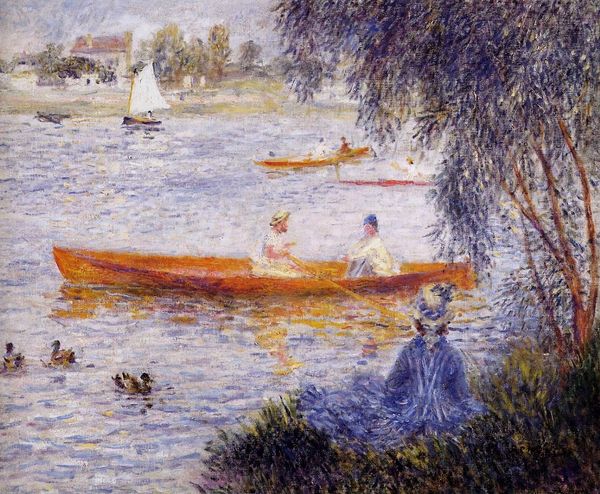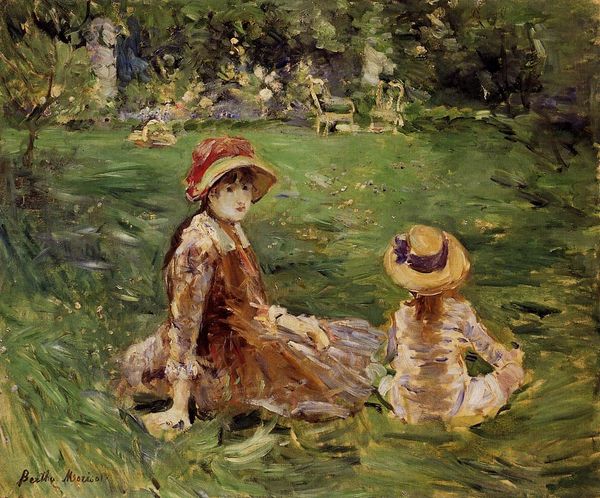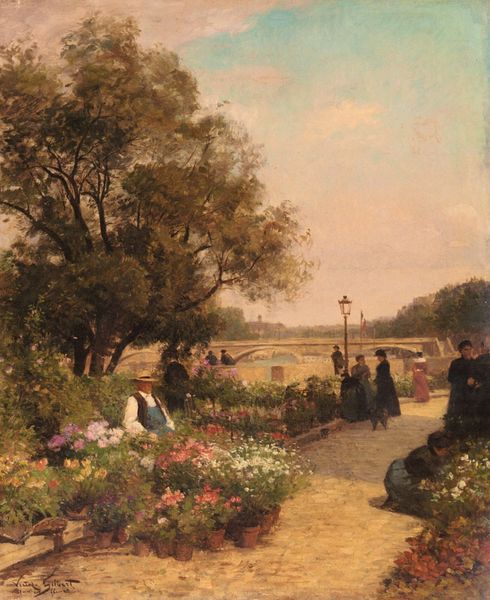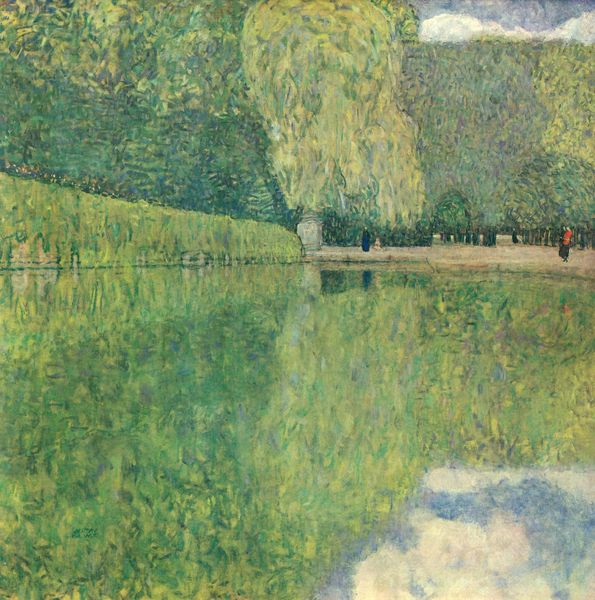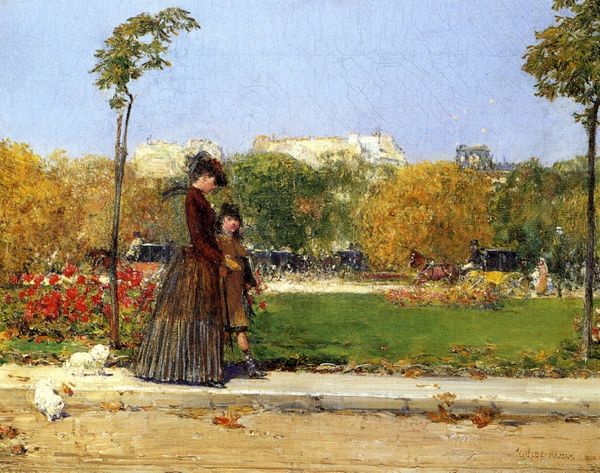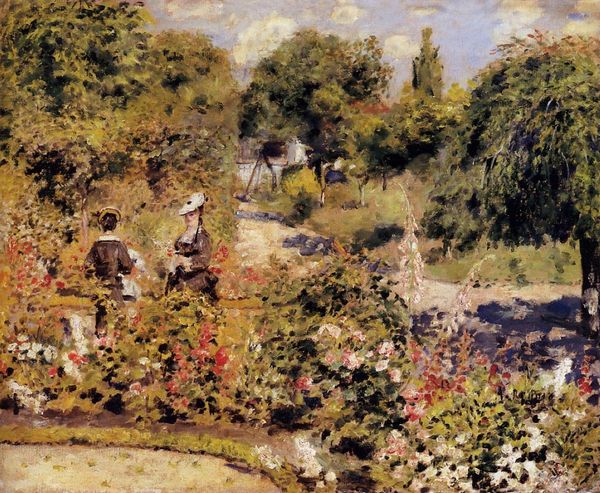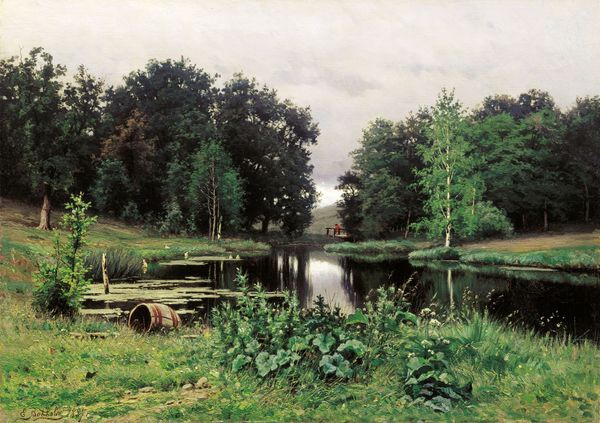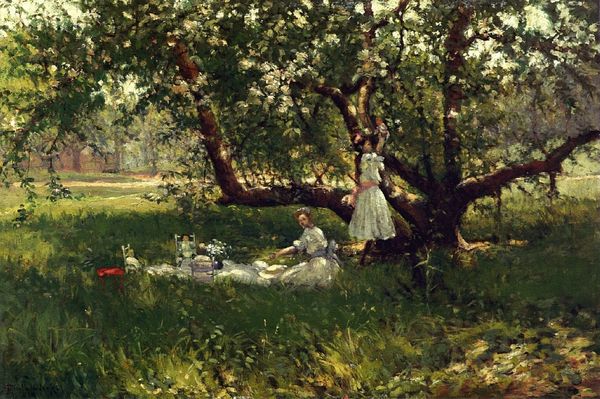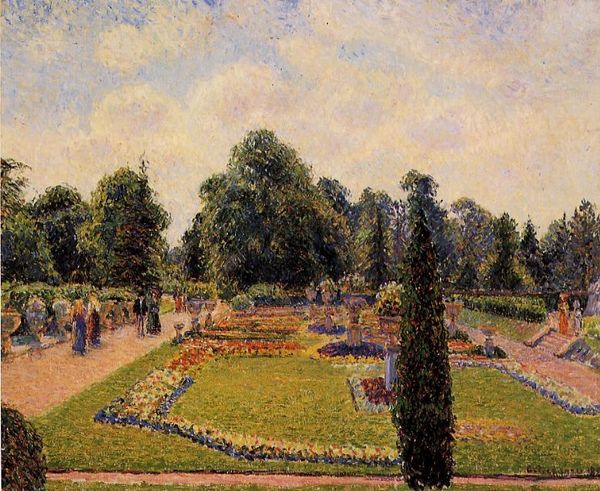
Copyright: Public domain
Editor: This is Childe Hassam's "Central Park," painted in 1892 with oil on canvas. The soft colors give it a peaceful, almost dreamlike quality. The way the light reflects on the water is really captivating. What stands out to you about the composition? Curator: The visual organization is immediately striking. Note how Hassam orchestrates space through color. Observe the contrasting cool blues and greens in the foreground with the warmer tones of the background foliage, creating depth and drawing the eye through the park. Do you notice how the curvilinear form of the water’s edge mirrors the path in the background? Editor: I see it now! That creates a sense of visual harmony. So, you are pointing out the use of formal elements and how they work together. What about his brushwork? Curator: Precisely! Consider the facture, or the application of paint. Hassam employs broken brushstrokes characteristic of Impressionism, especially to create a shimmer on the surface of the water. This loose handling of pigment allows for a vibrancy not possible through blended brushwork. It’s as if light itself is materializing on the canvas. Editor: The way you describe it makes me see how carefully considered each brushstroke is. I had just thought of Impressionism as capturing a fleeting moment, not something so carefully constructed. Curator: Indeed. While capturing a momentary impression is part of it, it is equally about the artist’s calculated arrangement of pictorial elements, a play between representation and pure, formal articulation. So much to think about regarding technique and style here. Editor: Thank you. I will look at Impressionist paintings with different eyes from now on, thinking about the interplay between light, brushstrokes, and the calculated composition. Curator: A painting such as this certainly reminds us to closely examine visual syntax and construction as it creates a foundation for understanding art in its most fundamental form.
Comments
No comments
Be the first to comment and join the conversation on the ultimate creative platform.
